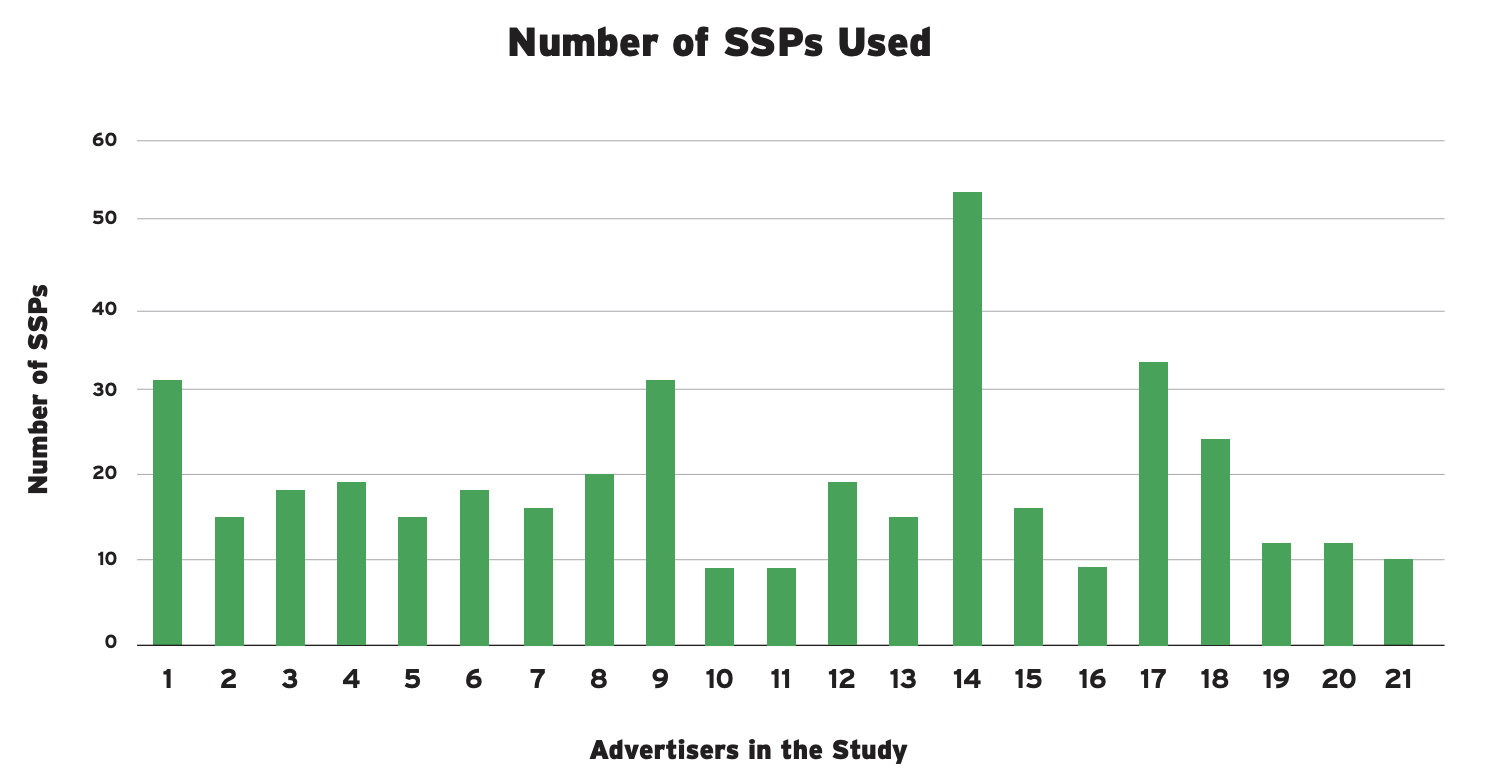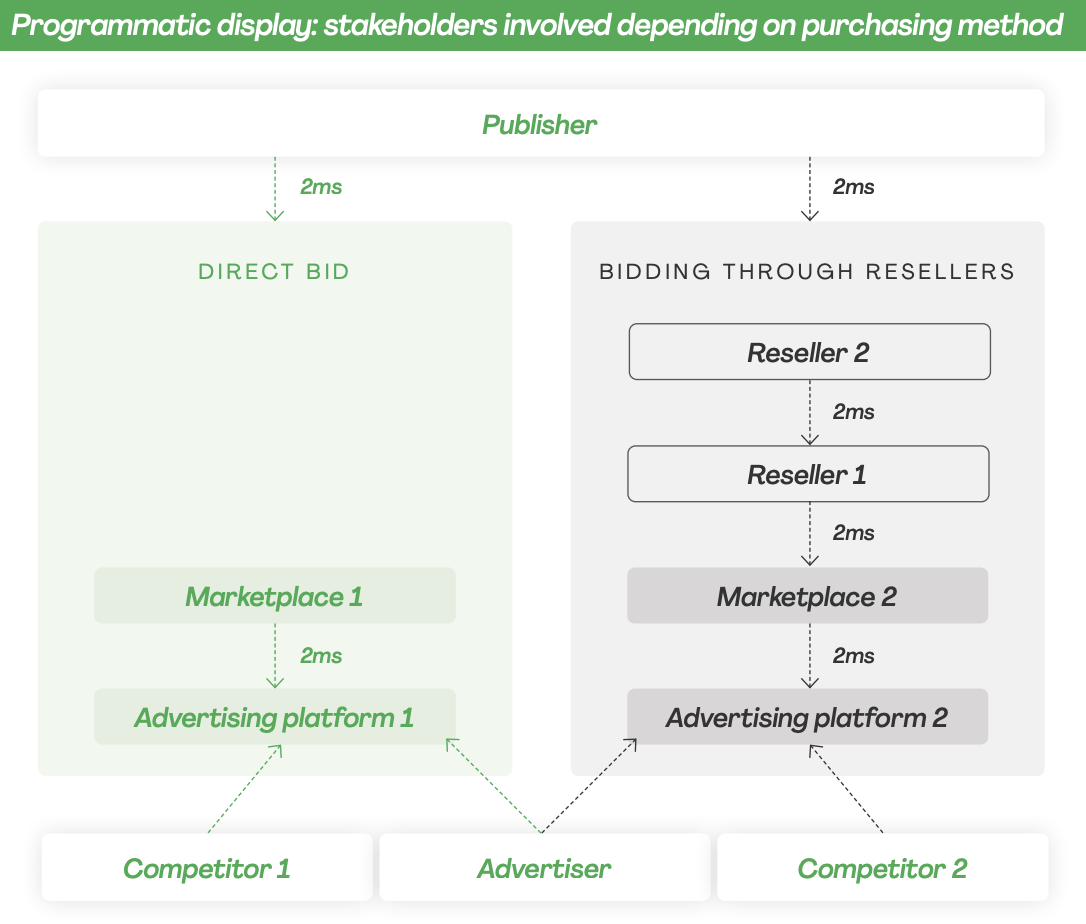Media (and how people consume it) is always changing. Because of that ongoing evolution, choosing the right partners to access the ad inventory you need can be challenging.
Holding companies have traditionally benefited due to their ability to curate ad inventory at scale. But that’s all changing, thanks to independent sell-side platform (SSP) providers like PubMatic, which deliver scalable and flexible programmatic options related to the digital advertising supply chain.
Wpromote is working together with PubMatic to democratize supply path optimization (SPO) so brands of every size can build the optimal media mix without relying on middlemen.
These changes are coming just in time, as trends like third-party cookie deprecation, the push for more sustainable media practices, and the rising importance of brand safety make inventory access a critical factor for future growth.
Wpromote’s Head of Programmatic & Video Skyler McGill and PubMatic’s Senior Director of Advertiser Solutions John Speyer are joining forces to share their insights into SPO—and how your brand can leverage these updates and unlock crucial advantages in the market.
Trim the fat: increasing efficiency with SPO
According to a recent study by ANA, the average advertiser is working with a whopping nineteen SSPs, while only a third have engaged in SPO.
That’s a problem for brands. Working with as many SSPs as possible may seem like the best way to get the ad inventory you’re looking for, but that just means depending on more intermediaries that help publishers sell ads—and each one gets a cut from each sale. According to the same ANA study, the average DSP is integrated with over 50 SSPs.

Source: ANA
As the lines between media platforms and channels begin to blur, you need to get smarter about where you invest your ad dollars. Instead of working with myriad SSPs (and running the risk of accidentally bidding against your own ads), you should select a handful of trusted SSPs that can provide you with better pricing, data, and inventory curation.
SPO helps brands streamline the ad-buying process by giving them access to inventory without needing a small army of SSPs. It’s early in the SPO revolution, so DSPs and SSPs are still figuring out where they stand competitively and which publisher inventories will prove to be most valuable.
The time has never been better to seize that early adopter benefit and start looking for ways to leverage this new approach to ad inventory to outsmart and outmaneuver the competition more efficiently.
Simplify the process: sustainable and transparent ad buying
Efficiency is just one piece of the SPO puzzle. If your brand has goals to make your ad buying more sustainable and more transparent, doing business with fewer SSPs can help.
In recent years, the significant environmental impact of digital and programmatic ad buying has become clearer. A carbon emissions report by fifty-five revealed that the digital ecosystem is responsible for 3.5% of all greenhouse gas emissions produced. That same report also found that a single ad campaign generates seventy tons of CO2 equivalent emissions, equal to the average emissions seven people release into the atmosphere in a year.
SPO can reduce that number significantly. In campaigns without SPO, advertisers are bidding through resellers, who may use other resellers before they even get to the advertising platform. Each resale emits more greenhouse gases, and that inefficiency adds up. By cutting out the middlemen and streamlining your methods, your team can make the ad-buying process a lot more sustainable.

Source: fifty-five
Another major issue is an industry-wide lack of transparency in the programmatic buying process. As the ad supply chain has expanded and become more complex over the years, the system has gotten more and more confusing, opening the floodgates to misrepresentation, fraudulent activity, and unjustified overhead costs.
By reducing the players involved, SPO helps marketers keep a better pulse on their ad spend. When you understand where your ad dollars are going, it’s harder to be caught off-guard by hidden or raised fees. In an era where brand safety has become a key consideration to advertisers everywhere, a more transparent supply chain process also makes it easier for you to track down why an ad might have appeared somewhere.
Get ahead: start using SPO now
If you’re considering SPO for your brand, start by evaluating the different SSPs (or DSPs) you’re already working with based on your business objectives and programmatic-specific considerations (e.g. efficiency, transparency, or sustainability) that are important to your business
Your team will need to focus on three critical questions:
- Is there a better way to operationalize?
- How can I streamline this process?
- Am I ready to challenge my supply chain partner(s)?
SPO can unlock a higher level of sophistication when it comes to choosing inventory, opening up some key advantages against your competitors. That’s why Wpromote and PubMatic have partnered to challenge convention in programmatic ad buying and position our clients to win.
That can’t happen overnight. But the collapse of the marketing funnel and the rise of more and more inventory options have made this revolution absolutely essential for any brand looking to get a step ahead by increasing efficiency and maximizing performance across the media mix.








Responses